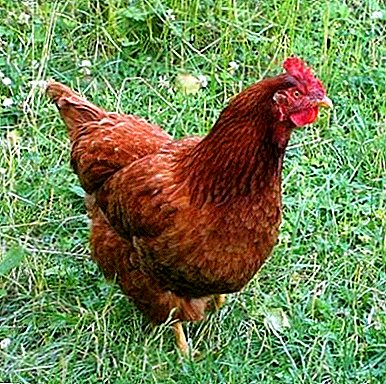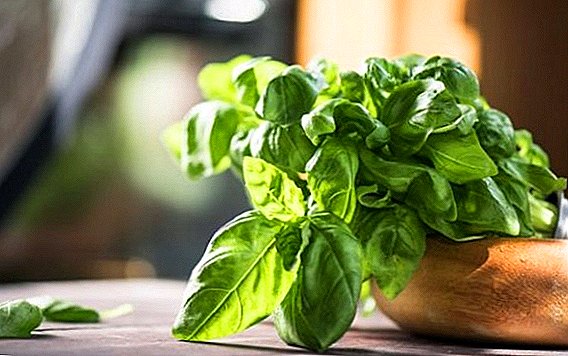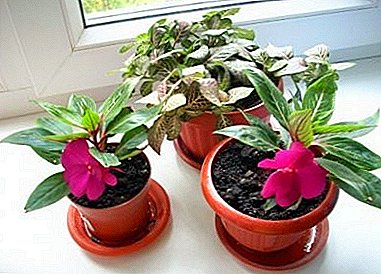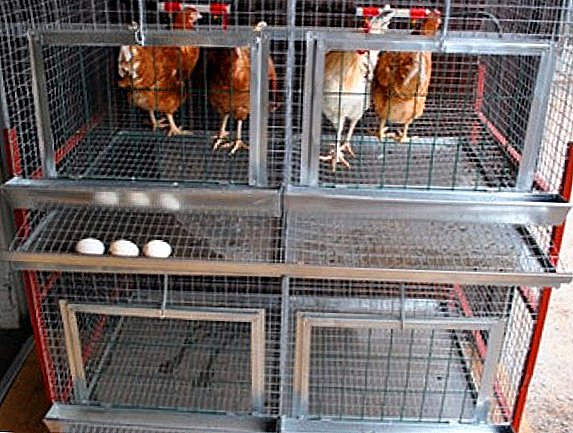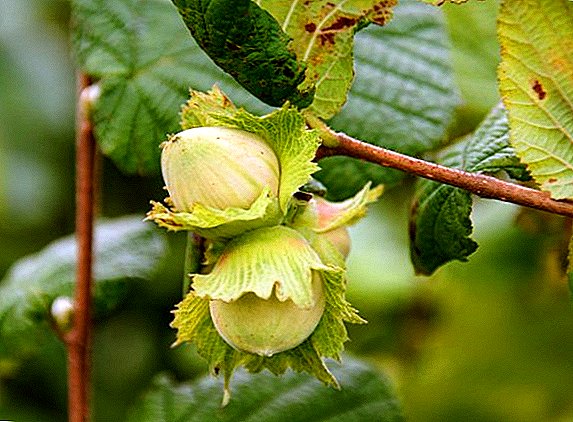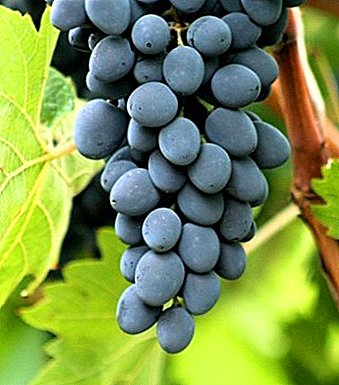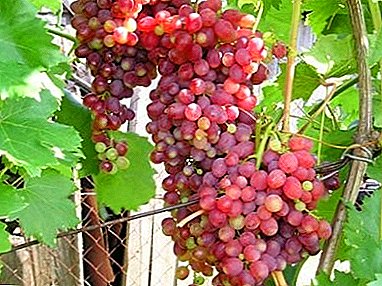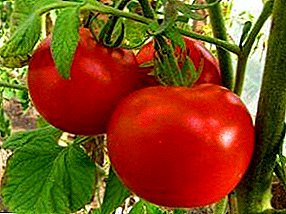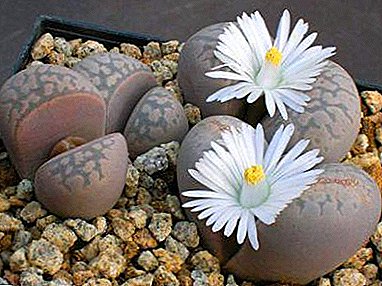
Highly decorative and exotic succulent, impressive species diversity, ideal for composite compositions. Planted in one container miniature plants of different colors, allow you to create an interesting and stylish accent for any interior.
Next, you will learn how to grow from seeds of Lithops pseudotruncatella and how home care for the Mix variety is carried out. Read about the names of other varieties of this plant and see how it looks in the photo.
You can also watch a useful video on this topic.
Views with description and photo
Lithops are supersucculent plants of the aizoon family. To date, scientists have about 40 species of this genus. Most of them are successfully cultivated.
Aukamp (Aucampiae)

Plant up to four centimeters. The body is covered with gray-green skin, its upper part is dotted with darker brown spots.
The flowers are yellowish, with a diameter of about 3.5 cm.
Brownish (Fulviceps)

The body of this species of plant has the shape of a cylinder with a flattened top dissected in half. Leaves tightly compressed. Plant height three centimeters. The color may be brown-brown, sandy or green. The peel is covered with orange and dark brown dots. The flowers are small, lemon-colored.
Leslie (Lesliei)

Dwarf succulent, no more than 2 cm in height. The leafy plates of bright green in the upper part have a darker marble pattern. Flowers white and yellow, exude a delicate aroma.
Marble (Marmorata)

The plant has a rounded shape, expanding upwards. Leaf plates are not closely connected. The leaves are gray with a darkened marble pattern in the upper part up to 5 cm in diameter and 2 cm in height. The flowers of the succulent white, up to 5 cm.
Olive Green (Olivaceae)

The leafy plates are fleshy, up to two centimeters in size, deep green or green-brown in color, almost spliced to the top. The surface of the leaves is covered with rare whitish spots. Reed flowers yellow. The flowering period is at the beginning of autumn.
Optics (Optica)

The leaf plates are rounded, separated almost from the base, color is green or grayish. There are instances with lilac leaves. Plant height does not exceed two centimeters, white chamomile flowers with lemon core.
Local (Localis)

Can be attributed to the most spectacular species. The succulent body is elongated, similar in shape to two tightly compressed beans. The color is yellow-red with crimson and ink inlays. The flowers are large, yellow shade.
Fulleri

Miniature succulent. The height of an adult plant is only 1.5 cm. Platinum leaves are semicircular, fused, green-brown color with purple-red divorces. The flowers are white, large.
Beautiful (Bella)

The leaves are fleshy, elongated, closed. Color sandy green. The gap between the leaves is shallow, from it appears a white chamomile flower with a delicate aroma.
Tackle (Turbiniformis)

The body of the plant, two centimeters high, is formed by a pair of round at the edges and flat at the top of the leaves, tightly closed with each other. Interleaf cleft surface. Color spotted, includes a dark green, gray and coral color. The flowers of dark yellow shades appear in early summer and continue flowering until the end of autumn.
Volka (Volkii)

The plant is formed by densely closed leaves, 4 cm high and 3 cm in diameter. Color bluish-gray with reddish or purple stains and speckles. The flowers are bright yellow, small.
False Shredded (Lithops Pseudotruncatella)

The plant, four centimeters high, is formed by two fleshy leaf plates and has a flat surface, grayish-brown or pinkish in color with darker patches. The flowers are large, yellow shades. Plant seeds can be purchased at the store or get yourself.
Lithops are sown in March. Growing takes place as follows:
- Soil is prepared from crushed red brick, turf soil, sand, clay and peat in the ratio of 1: 2: 2: 1: 1 The soil is steamed, cooled, loosened.
- The pot is filled with 30% fine gravel for drainage. Next, fall asleep soil and moisten it.
- Seeds are soaked for 6 hours and sown on the ground surface.
- The container is covered with film or glass and placed in a warm, well-lit place.
- The temperature in such an improvised greenhouse is maintained at 30 degrees during the day and 18 at night. Twice a day crops need to be aired. When the soil dries, it is moistened with a spray gun.
The first shoots can be observed after 6-12 days.
Divided (Divergens)

This type of lithops differs from the others by a large distance between the leaves.. The diameter of the plant reaches three centimeters. Color ash green with gray splashes. The flowers are large, up to five centimeters, yellow color.
Soleros or Iviform (Salicola)

The leaves are oval, with a small cleft between them. Plant height 2-2.5 cm. The upper part is flattened. Body color is succulent green with divorces of a darker shade. The flowers are white, small, fragrant.
Werneri

Miniature, up to two centimeters, succulent. A pair of fleshy leaves is rounded when viewed from above, in profile convex, tuberculate, shiny. The skin is pale gray-green with reddish or bronze veins of varying intensity and density. The flowering period occurs in early autumn. The flowers are small, yellow, with rare petals, have a pronounced aroma.
Green (Viridis)

Perennial succulent. The leaves are convex with a cleft, a depth of 2 cm. The body of Lithops can vary in color from yellowish brown to greenish pink.. The surface of the leaf plates can be ashen, grayish-pink, cream, beige or green. The flower is white, with a yellow heart, up to 3.5 cm.
Warty (Verruculosa)

Succulent perennial. The leaves are fleshy, cone-shaped, gray or blue-gray color. The top of the lithopsa is flat, up to 3.4 cm in size. The upper part of the leaves is characterized by a dull gray, beige with a pink tint color scheme with small red convex dots. The flowers are yellow shades reach a size of 3.5 cm.
Schwantesii

The plant is formed by a pair of fleshy, fused to the middle of the leaves, cylindrical or obversely. Lithops top flat. Color reddish brown with a grid of dark tubules on top. The flower is yellow.
Mix (MIX)

This is the name of the plantings, including several types of these succulents. These plants, due to the variety of colors and patterns on the leaves, create spectacular combinations, being planted in one pot.
All types of Lithops perfectly adapted to high temperatures and dry air., but in the summer on especially sultry and hot days, you can spray the air around the "rock garden" from a small spray gun. Lithops are very demanding of lighting. It should be bright all year round.
Important: Watering these miniature succulents needs very moderate. Their roots are very susceptible to rotting from moisture overload.
It is optimal to conduct watering from spring to autumn once every two weeks, and from October to stop watering until new leaves appear. In winter, during the period of rest, the comfort of Lithops requires a temperature not higher than 15 degrees. If the room is too warm, the plants will stretch, losing their decorative effect and stop blooming.
Bromfieldii

Stemless, perennial, miniature succulent. The plant is formed by two leaf plates of a back-conical shape, divided by a crack.. The top is flat. The color can be greenish-brown, reddish-brown, green, whitish with splashes and dots. The flowers are yellow.
Сomptonii

Succulents form two sheets separated by a crack. Leaves conical or cylindrical in shape have a flat surface. Color reddish tones. The flowers are yellow.
Dinteri

Two accrete smooth leafy plates, pinkish brown or gray with pale dots and red spots. The flowers are bright yellow color.
Dorotheae

The leaves are fleshy, juicy. Spherical or reniform, fused, with a crack in the middle. The plant reaches 4-5 cm in height. The color is yellowish brown, gray or dark gray. The surface is decorated with a geometric pattern resembling sprigs of coral or frost patterns reddish or brown shades. Flower yellow, 3-4 cm.
Franciscii

Succulent is formed by two fleshy, short, convex parts, separated by a deep crack. The color is silver-beige, gray-white or cream with a yellow or green shade. In the upper part of the leaves are covered with dull gray-green dots. The flowers are yellow, about 2.5 cm in size.
Toncolinear (Gracilidelineata)

This type of lithops rarely forms large groups.. The leaf plates with which the plant is formed, when viewed from above, are round or slightly asymmetric, flat in profile or slightly convex. The surface is lumpy, bluish-white, pale pink, greenish-white or light beige. On top of the leaves are covered with brown or red winding lines.
Yellow flowers, three centimeters in size, have a pronounced aroma.
Hallii

Succulent is formed by a fleshy, fused pair of leaves of a cylindrical or conical shape with a crack in the middle. The color is yellow-brown, gray-brown or gray-white. The surface is flat, with a reddish-brown grid. Flowers, 2-4.5 cm in size, have a white color.
Hookeri

Plant size 2.3-3.5 cm. Two accrete leaf plates have a pronounced cleft. The upper part is flat, pinkish-brown or orange-brown color with a grid of dark tubules. The flowers are yellow, up to 3.7 cm in diameter.
Ulii

Succulents are formed by a pair of conical leaves with a crack between them, one centimeter deep. The leaves are dark gray or whitish-gray color with bright patches in the upper part. Single flower, white.
Conclusion
Literate maintenance of "live stones" Lithops is available even to novice connoisseurs of outstanding plants.. This succulent is a long-liver, and this means that the formation of an individual composition from all sorts of specific combinations can be carried out in stages, turning the cultivation of a home plant into an exciting creative process.


